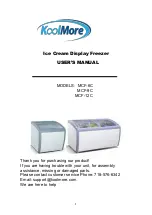
Operating Instruction Aircotec Primus
Description of capabilities
Units of measurement:
This instrument can be used internationally. The units shown for altitude and in the vario display can easily be
switched from metres to feet and back and for speed between k.p.h., m.p.h. and Knots.
The QNH display can show readings in either hPa or ,,inches x 100”. The internal temperature can be shown in
Centigrade or Fahrenheit.
Altimeter:
Absolute altitude, “Abs”, is set at the start-point altitude above sea level. The measurement range goes up to
8,000 metres.
Altitude above QNH can be set if the current barometric pressure is known (in hPa). The setting range is from 950
to 1070 hPa.
Difference in altitude, ,,Diff, (e g above the landing ground) can also be set.
Gains and losses in altitude can be shown via the additional temporary altitude (ALTI=0).
Rate of climb or rate of sink can be measured via the additional momentary altitude reading. There is no need for
the pilot to work out the difference in his head; he merely sets the altimeter to ,,zero while in flight.
Fixed altitudes:
The Primus may stare five start place altitudes. Once set, the pilot only has to select the preset altitude (A1-A5)
without any further altimeter adjustment.
Barometer:
If the PRIMUS is to be used as a barometer, its height above sea level must first be set. The next step is to switch
the display to QNH and read off the barometric pressure in hPa or inches. Regular observation will enable
changes in atmospheric pressure caused by the weather to be spotted as soon as they start.










